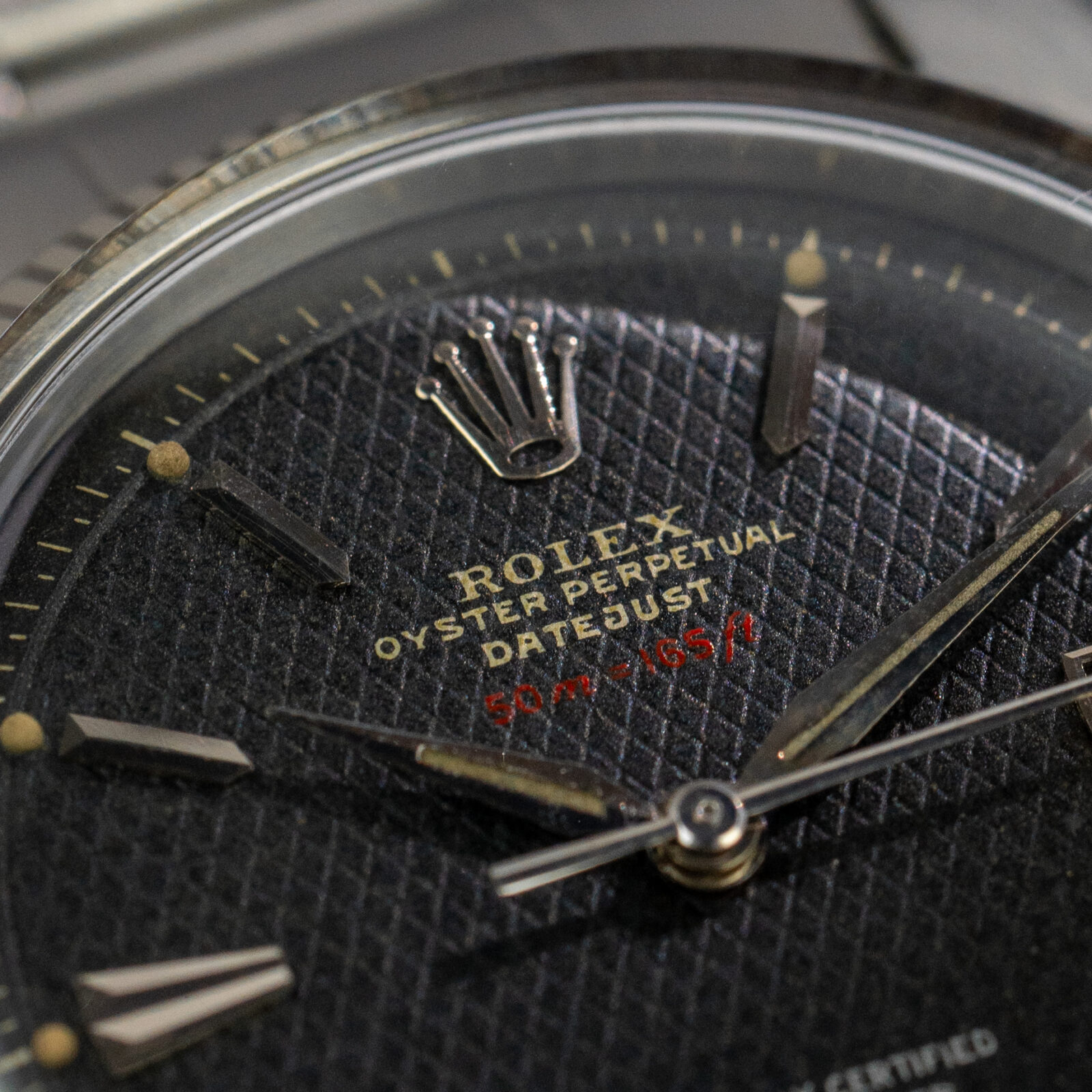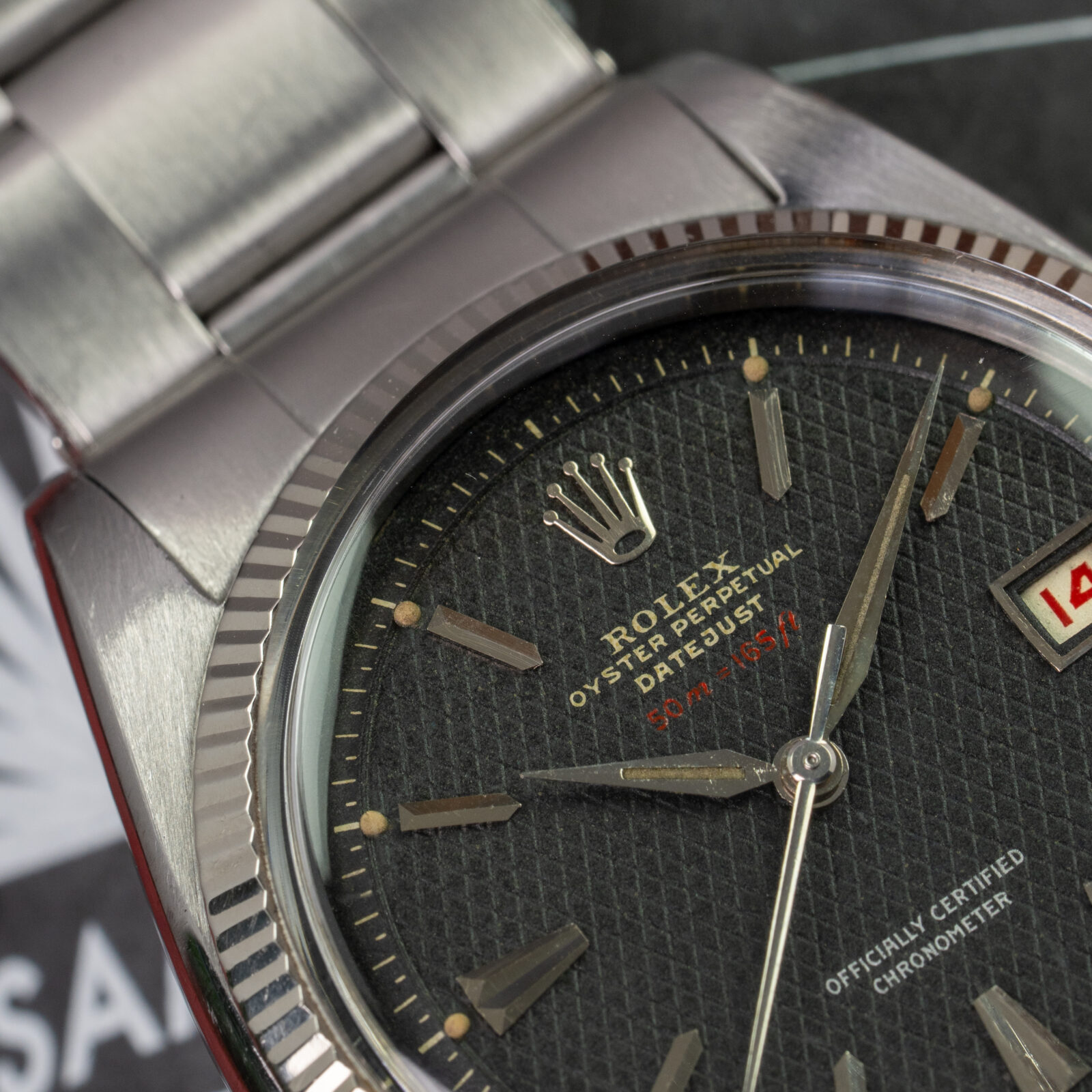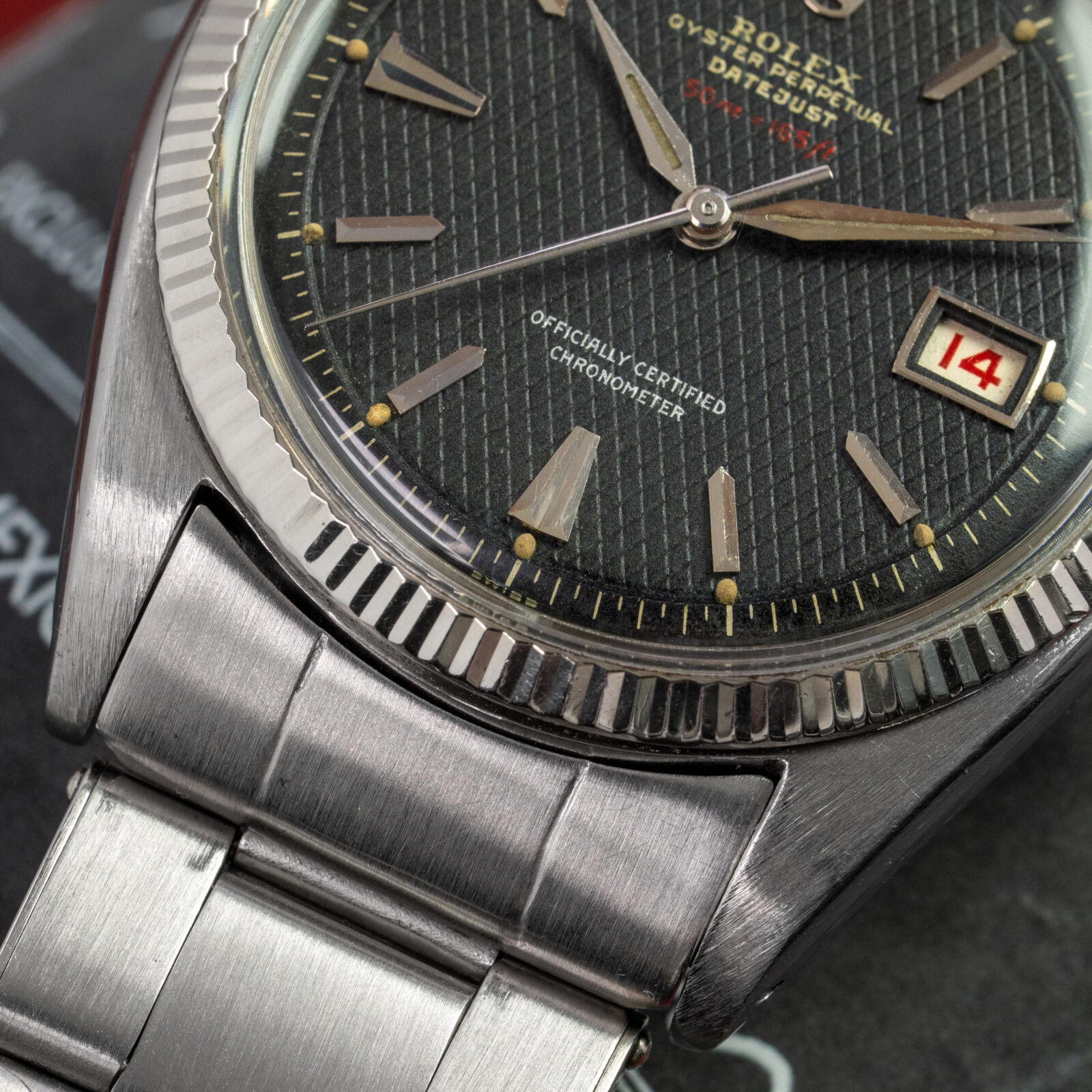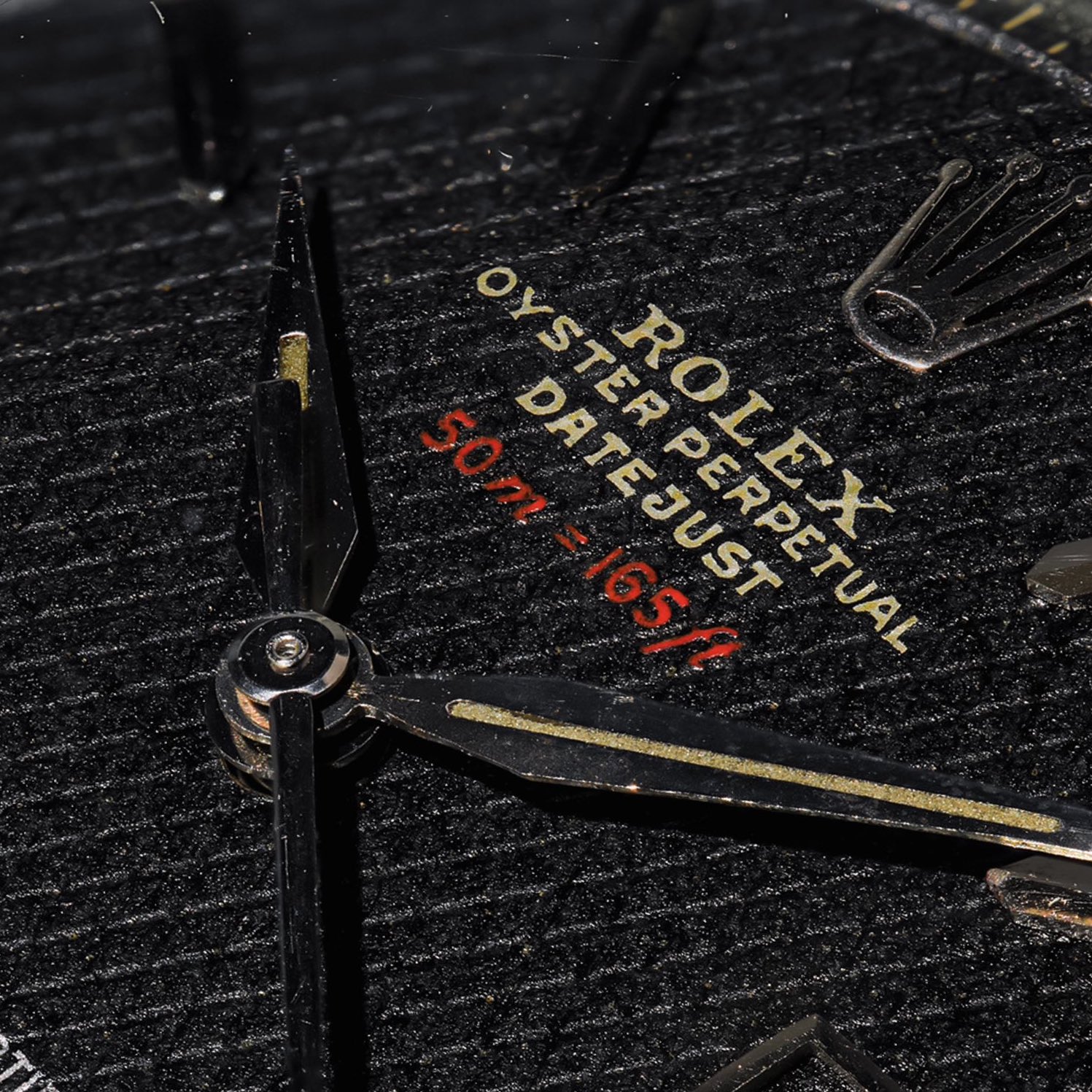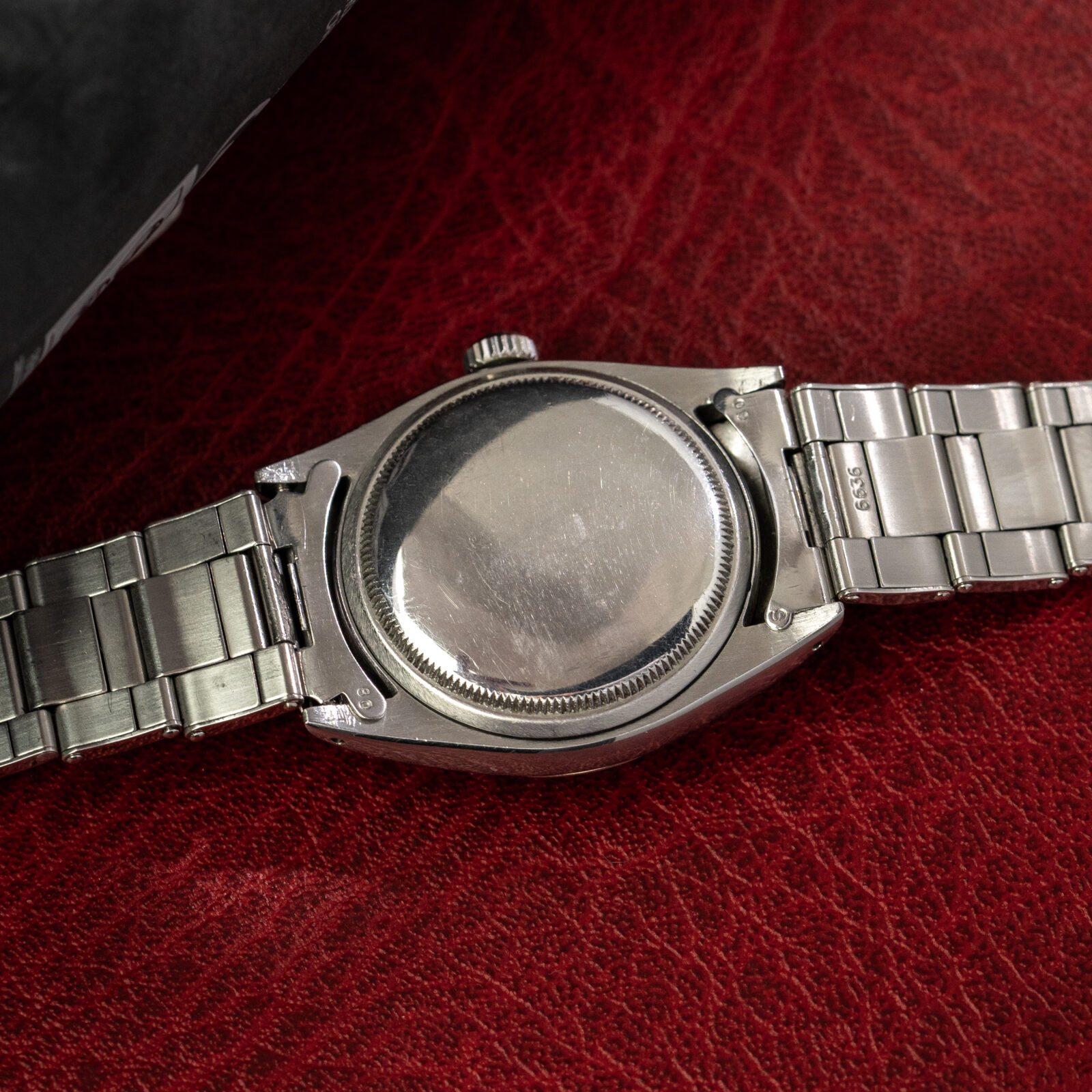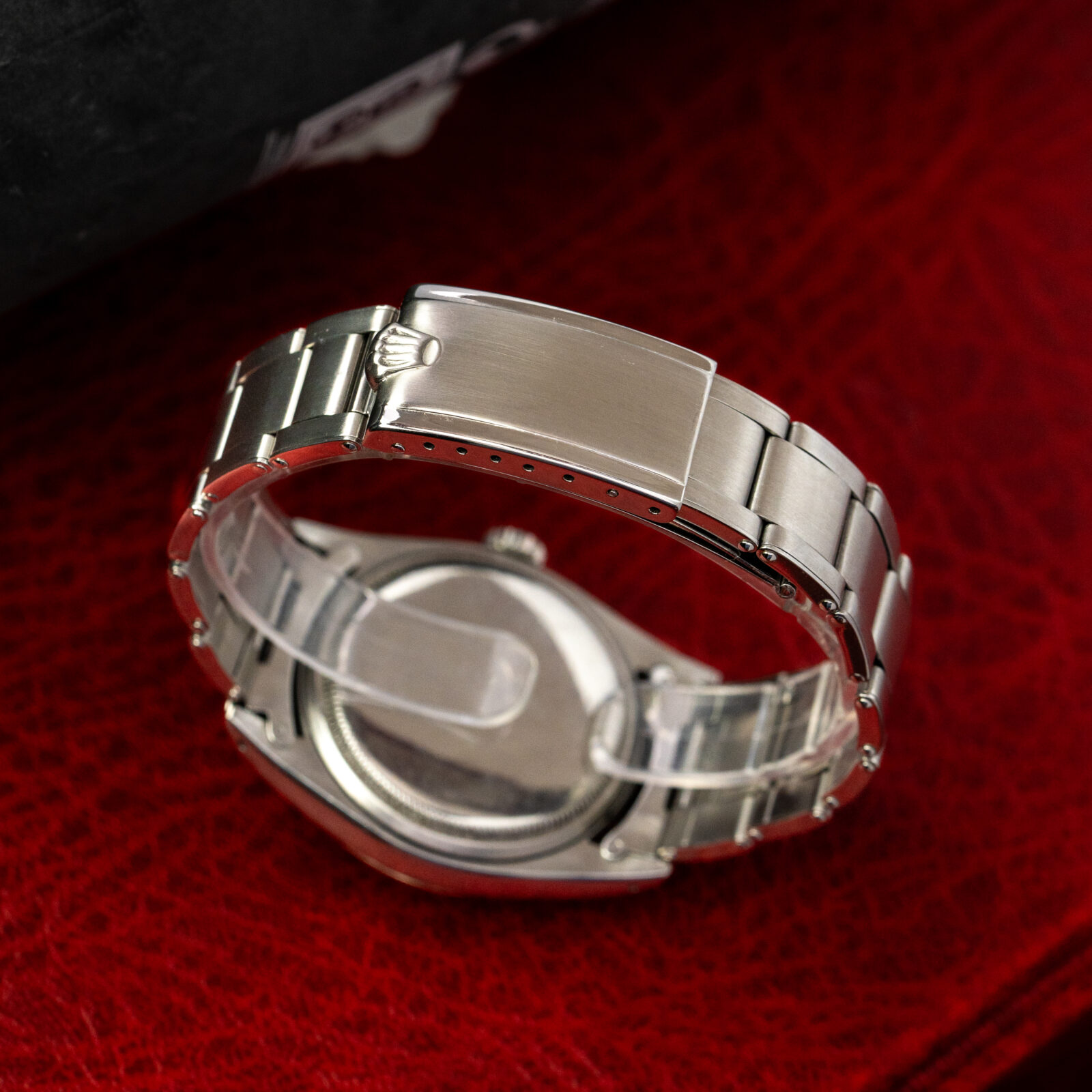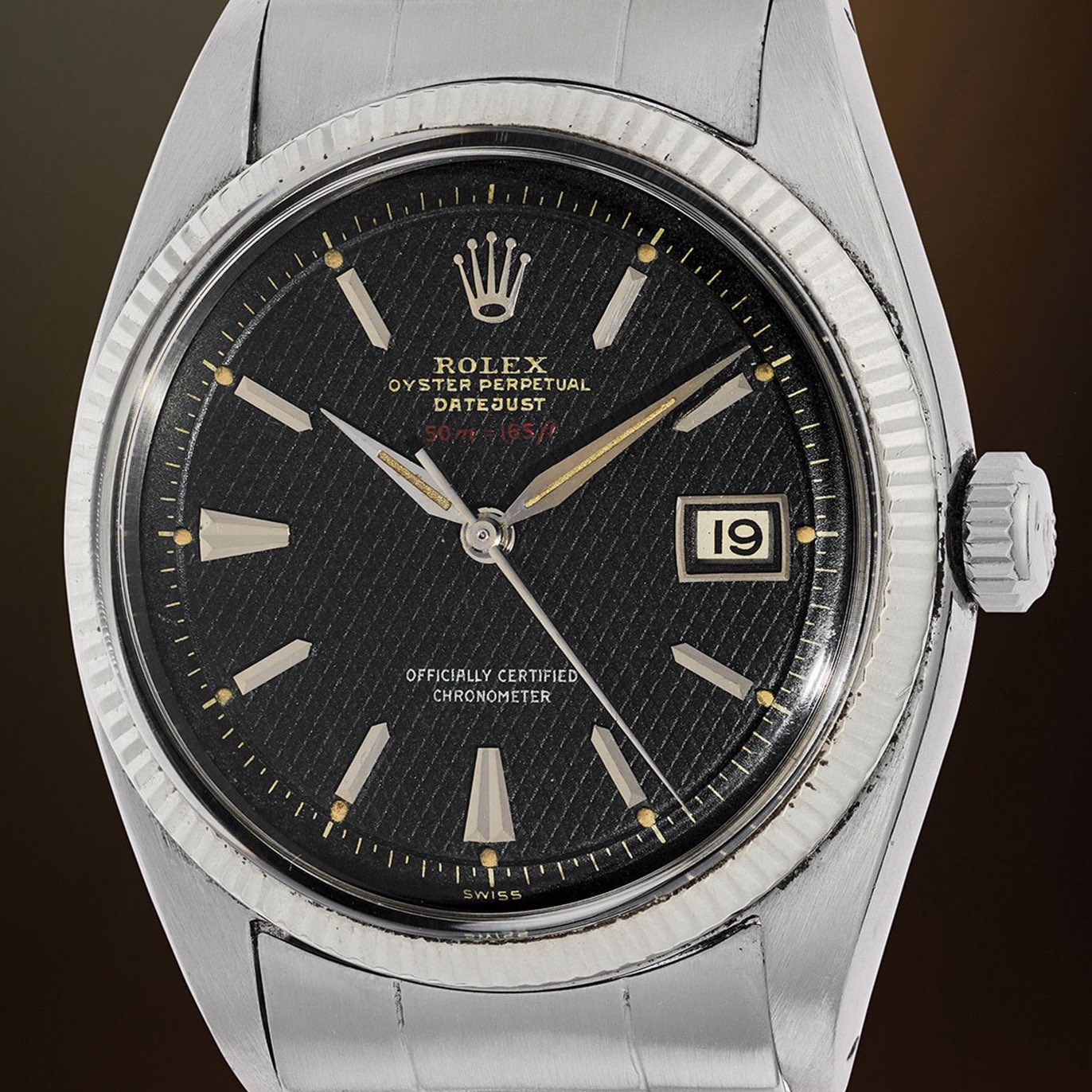

Stainless steel Rivited extandable Oyster bracelet '6636', with '80' end-links.
6305
The "Honeycomb dial" with a red-depth rating printed on it, makes this early Datejust an esteemed execution of an otherwise ordinary model-line.
The steel Datejust is by many considered the perfect one watch collection. Not only because of its entry-level price point, but also because of its adaptability, practicality, and iconic looks. With all its possible configurations, this timeless wristwatch has been enjoyed by a wide variety of people over the past 80 years. It probably doesn’t come as a surprise that we personally prefer the older models. So today we take a look at where it all started and discover the groundbreaking beauty of the archetypical steel Datejust.
The first were ushered in under two references, depending on the bezel finish, it was either a 6304 or 6305. The first mentioned is more uncommon to encounter and had a smooth-finished, slightly domed bezel. The 6305 can be divided in two series. Initially a white-gold milled bezel was applied to the case. These are more finely fluted than the later bezels from the 16xx series onwards, and therefore are known as “coin-edge”. The case itself measures a perfect 36mm and is preserved in immaculate state. Due to the domed caseback, these so-called “Ovettone” sit a bit higher on the wrist. The lug-width is 20mm and in one find the riveted Oyster with expandable links.
One of the most recognizable characteristics of Rolex is the “Cyclop lens” to magnify the roulette wheel for the date function. This was developed for the Datejust and the patent was filed in 1952, right before the launch of the 6305, making that the first reference to factory feature this novelty. Yet, we opted to install the domed crystal in order to get a unobstructed view of the most important part: the dial.
Installed is the most coveted type of dial, which isn’t one with a smooth surface but with a waffle motif instead; also known as “Honeycomb”. These are considered the pinnacle of steel Rolex Datejusts. Apart from the two color options, either white or this more sought-after black dial, there is also a variety in the cliché used. Besides the spacing and graphics of the font, the clearest difference can be found in the smooth outer track that has a soft “pie-pan” edge. (less angular compared to the 16xx series) One being divided into 5 segments per minute, this one into 10 segments per 5 minutes.
The dial is signed “Swiss” at the bottom and followed up on the “Swiss made” signature from earlier generation Datejusts. In the 50’s, before the use of the well-known “SCOC”, the dial of the Datejust reads “Officially Certified Chronometer” above the 6 o-clock position. Moreover, we can find a red depth rating being printed under the model name; a rarity which can be found on a very small batch of Oyster Perpetuals in the mid 50's. As far as we know, this is the only 6305-1 with black waffle dial to feature this oddity.
The overall condition of the dial is very appealing and the contrasting print remains vivid and intact. It has pointy baton markers and thicker indices at 6 and 9; to create a perfect balance with the date window that has an applied metal frame. The leaf hands and dial feature luminous material that is perfectly in-tact and nicely aged to a creamy colour.
The watch first surfaced when Phillips Auctions (Credit to them for the last 3 pictures) announced they were going hammer it. However, the Swiss owner ended up preferring a private sale instead, so he pulled the lot.
To many a steel Datejust is the most common luxury watch, but if you look a little further you will find a captivating niche with coveted models to collect. The origins are always interesting to discover and in this case we find many factors that turned out to be historically important. No wonder Hans Wilsdorf himself always and only wore a Rolex Datejust.


